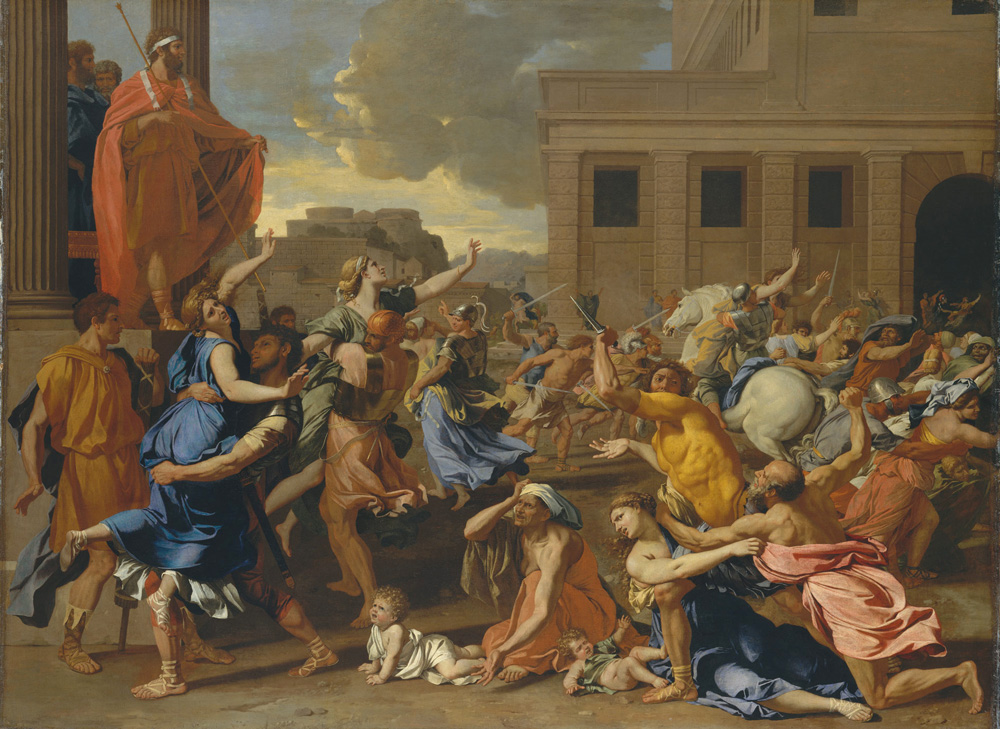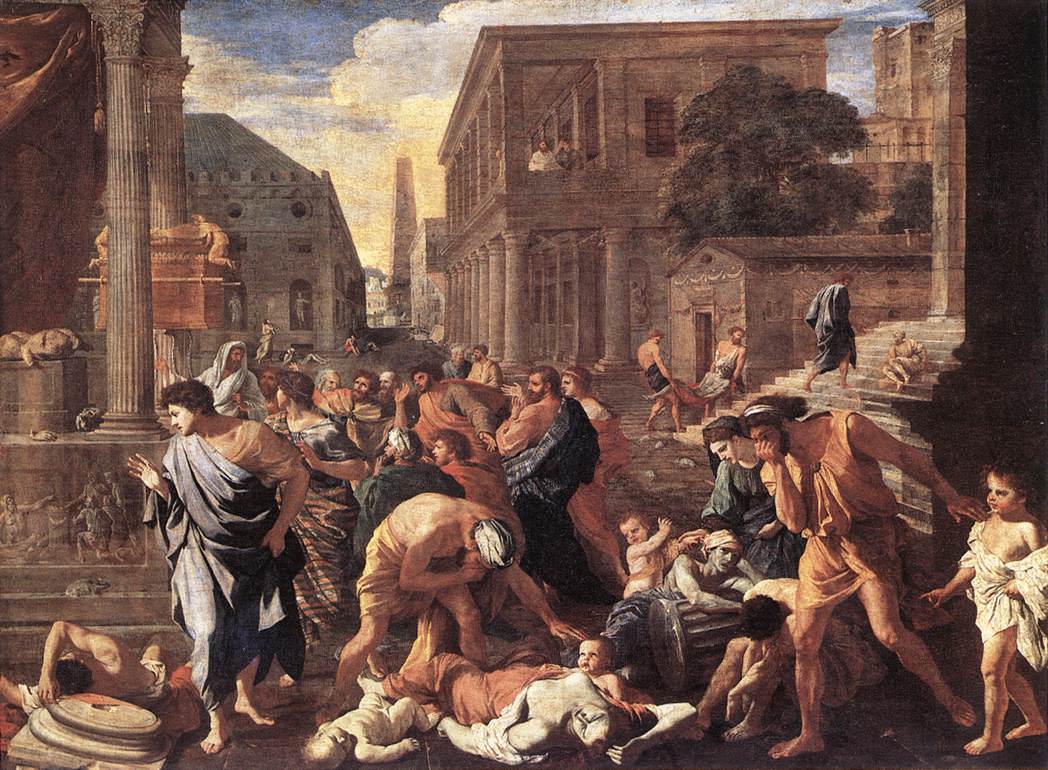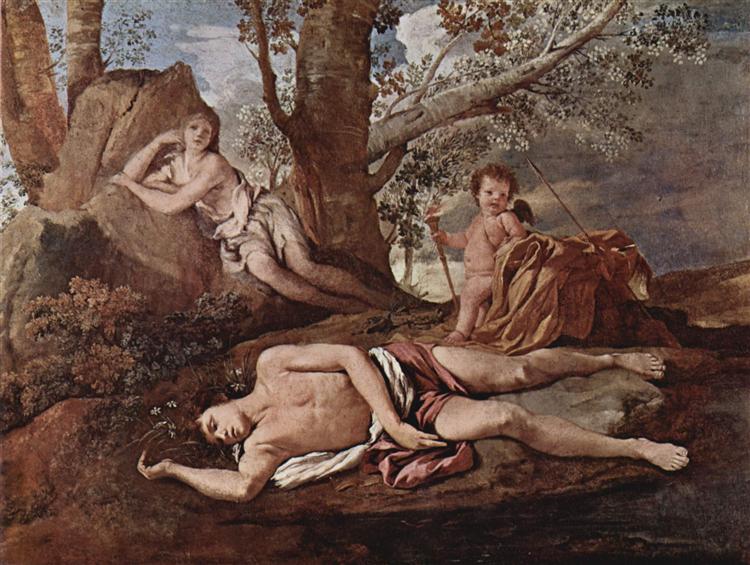The Five Greatest Painters, Ever (At Least For Now)
In my opinion painters owe to Giotto, the Florentine painter, exactly the same debt they owe to nature, which constantly serves them as a model and whose finest and most beautiful aspects they are always striving to imitate and reproduce. Giorgio Vasari
The sun finally broke through the clouds yesterday, and I celebrated with my two dogs Ita and Roscoe by taking a long walk in the woods. My feet and my mind wandered from here to there as they are wont to do, and I found myself thinking many random thoughts, including, "Who would I rate as the greatest painter of all time?"
I followed that up with "That's ridiculous. How could I ever judge the greatest painter of all time?" Then I broadened the question to one that is still ridiculous, but provokes lively discussion, even if I'm only talking to myself: "Who are the five greatest painters of all time?"
What would a painter need to do to make my highly arbitrary and completely subjective "Greatest of All Time" list?
They would need to do a few very difficult things very, very well, such as: Design paintings that don't allow you to look away; manipulate paint beautifully; see the world in a new way; and (most importantly) say something profound about what it is to be alive. Any one of these is a tall order that most painters, myself included, can only aspire to.
These five painters are not necessarily the ones who fill my artistic well, or who I've learned the most from, or whose work I look at with the deepest pleasure. To my way of thinking, they are simply the most awe-inspiring, the gods on high.
Read on to see why (at least for now) these five artists inhabit my personal "Painters' Pantheon," and let me know if you agree.
Giotto (1266-1337)
Giotto, like the other painters profiled here, created a transition from an old to new way of seeing the world. Before Giotto, paintings were gilded, carved, decorated, and worshiped as religious objects. Giotto kept the spiritual power of painting intact through his ability as a storyteller, but he also developed a new sense that a painting was more than an icon, it was a window into the world.
Giotto looked at space, light, and the human form as hadn't been done since the lost art of the classical age.
From his study of the world around him, Giotto built paintings that have both a highly refined elegance, and deep emotional drama.
If Giotto's "Massacre of the Innocents" doesn't make your heart ache, you're made of sterner stuff than I am.
Nicolas Poussin (1595-1665)
Poussin moved to Italy in search of a deeper art than he could find at the court of King Louis XIII in his native France. Political and cultural power had shifted to Paris, but the greatness of Italian art from ages past meant that Rome was still the mecca for painters.
Poussin fell in love with the ancient Roman civilization that was being unearthed under the pastures and cobblestones of his adopted city, and he became an expert in the architecture and culture of the classical age.
Poussin was a genius in the formal aspects of composing a painting—but he also had great empathy for the characters he painted from history, mythology, and the Bible.
Poussin (along with his friend Claude Lorrain) is responsible for taking landscape painting from the insignificant role of being a backdrop for figures, to a respected independent genre.
Poussin's painting may seem hard to access to our modern eyes that have lost the patience to read a complex pictorial narrative. But his life story is a modern one, and inspiring.
Poussin was one of the first independent artists, painting what he wanted to for a small group of collectors who respected his skills and understanding. For me, he's the ideal of a painter who possesses intelligence, feeling, and integrity.
Caravaggio (1571-1610)
Caravaggio was a painter rock star, who, in the classic style of that profession, lived hard and died young. Somehow alongside the sex, drugs, and arrest record, he managed to revolutionize Western painting.
His innovative style influenced a generation of European artists, including Rubens, Hals, Rembrandt, Vermeer, and Velazquez.
Caravaggio's paintings introduced a dynamic way of composing with extreme contrasts of light and dark. This dramatic "chiarascuro" replaced the subtle shading and delicate coloration that had been the hallmark of Renaissance figure painting.
Caravaggio also developed a radical realism, posing the thieves, beggars and prostitutes he knew from Rome's streets as Jesus, Mary, and the Apostles.
His huge, virtuoso compositions were scandalous to religious authorities, and thrilling to young painters.
I didn't understand the power of Caravaggio's work until I saw his painting in the flesh. When I stood in front of "The Martyrdom of Saint Matthew" in a dim church in Rome, the grand scale of the composition, the orchestration of light and dark, the "thereness" of the figures, pulled me directly into the tragedy and violence of this story.
Simply put, Caravaggio was a wizard, and his magic is still unique, powerful, and impossible to fully understand.
Paul Cezanne (1839-1906)
Every now and then someone comes along who is as much a scientist as he or she is a visual artist. They have a new way of seeing that's based on their own unique understanding of the structure of nature. When translated into pigments, this new way of seeing creates a new way of painting.
Cezanne falls into that category. He was an unlikely genius, a country boy with a chip on his shoulder from a nouveau riche Provençal family. He had a hard time fitting into the Paris art world.
Cezanne's work stabilized when the kindly painter Pissarro took him under his wing, and led him outdoors with a French easel. Pissarro counseled Cezanne to quit painting from his dark imagination, and instead study the light of nature.
From then on, Cezanne devoted himself to "perceptual painting," that is, the direct observation of landscape, objects, and figures. These varied subjects were united by his rigorous recording of color and form, and his supremely self-confident belief in his own way of seeing.
Cezanne's emphasis on "tache," a patch of pigment that’s a direct translation of the observed color in nature, flattened the pictorial space that had dominated painting for centuries. Unlike Monet and the other Impressionists, his work echoes Poussin in its focus on form rather than light.
Cezanne showed the way for a new emphasis on painting as a flat, two dimensional surface, rather than as a window into a three-dimensional world. In doing so, he brought art full circle, back to “painting as object.”
Matisse said this about Cezanne's Three Bathers," which he purchased when a struggling young artist: "In the thirty-seven years I have owned this canvas, I have come to know it quite well, though not entirely, I hope; it has sustained me morally in the critical moments of my venture as an artist; I have drawn from it my faith and my perseverance. . . ."
Such is the power of Cezanne’s work. Beyond the beauty of his color, the geometric complexity of his compositions, his deep exploration of a specific time and place, is something even more: Cezanne's single-minded building of a universe of images that are completely, uniquely his own.
Richard Diebenkorn (1922-1993)
"Protean" is the word that comes to my mind when I think of Richard Diebenkorn. Over the course of his long studio life, Diebenkorn’s work shapeshifted from landscape-based abstraction, to abstraction-based landscape; from small-scale observed still life, to large-scale minimalist inventions; from graphic black and white ink drawings, to lushly colored gestural paintings.
Some artists change style to follow trends and increase sales. The opposite was true for Diebenkorn, who often found himself out of step with what was fashionable in the art market.
Diebenkorn followed only his own inspiration on his journeys between realism and abstraction.
He studied, borrowed, experimented, and then dug in and took a series as far as he could, until another idea took shape, and then he followed that one to the end.
Each of Diebenkorn's bodies of work is complete unto itself, but grows from the images that precede it. Each series emphasizes color that's by turns subtle and unapologetically decorative. Each cycle is rooted in a specific place and light, from the early abstractions painted in New Mexico and Indiana, to the later compositions inspired by the California landscapes he made his own.
With his last body of work, the grand Ocean Park series, we're right back where we started with Giotto. Art that is based in spirit—and also supremely, wonderfully, about the physical beauty of paint.
Richard Diebenkorn was, by all accounts, that rare kind of genius who is kind, generous, and a well-loved family man.
He followed his own muse, and I get the feeling that if fame and fortune hadn't tagged along behind, he would have been okay. His life’s work was to grant himself the freedom to follow his imagination with his hand and eye, and that he accomplished beautifully.
So yes, there is a silliness to this “Five Greatest Painters” exercise. It’s completely personal, temporary and idiosyncratic, but we all need our heroes, right?
I have my list of runners-up—but maybe they’ll be on your “Five Greatest” list. Feel free to share your own personal pantheon in the comments.























